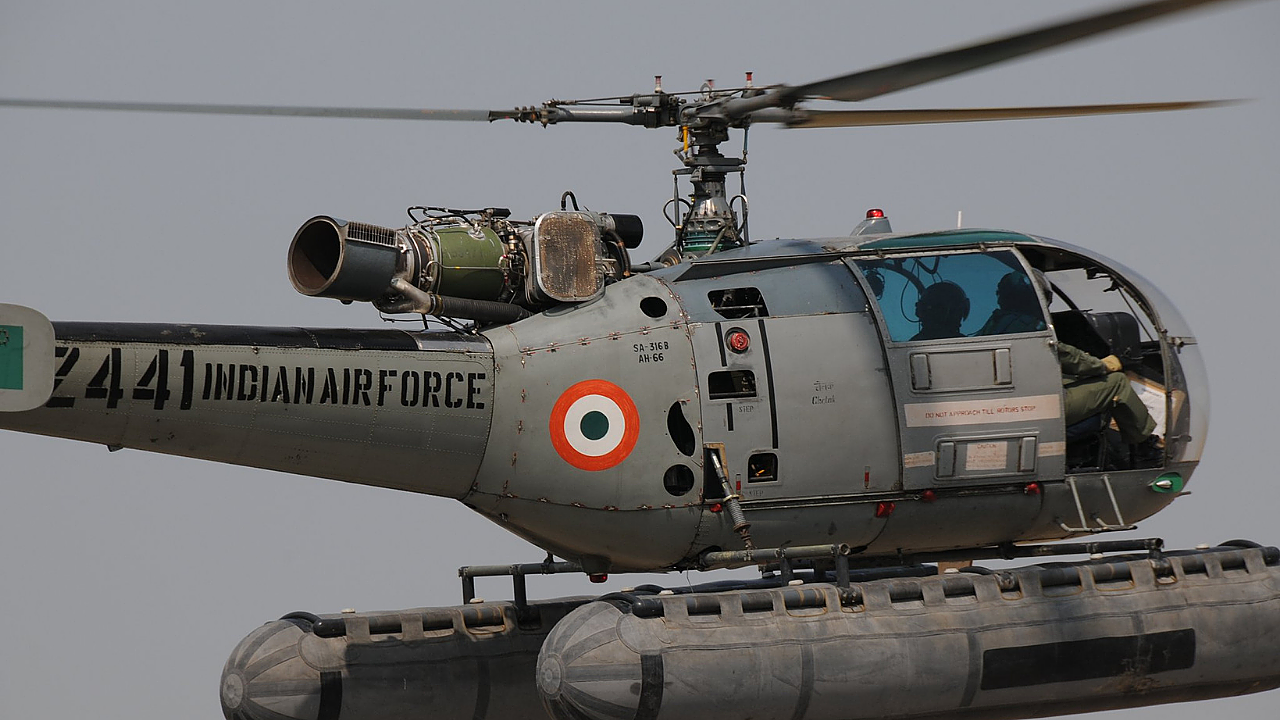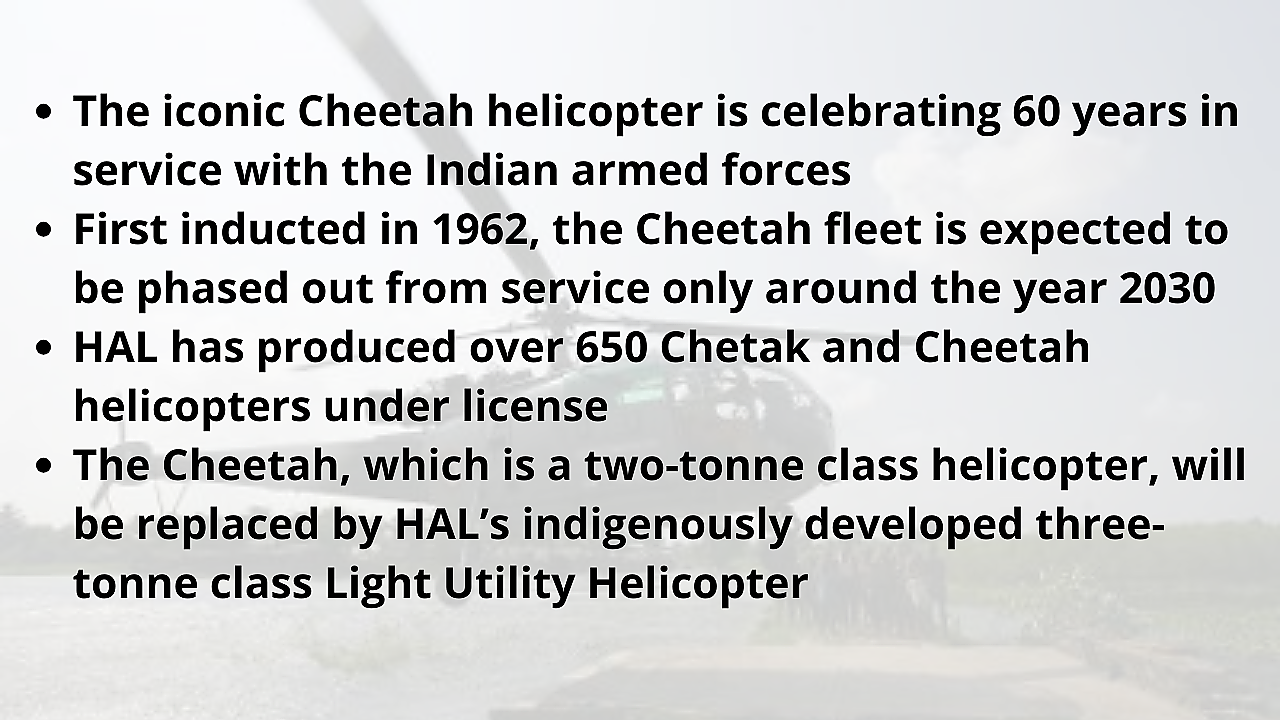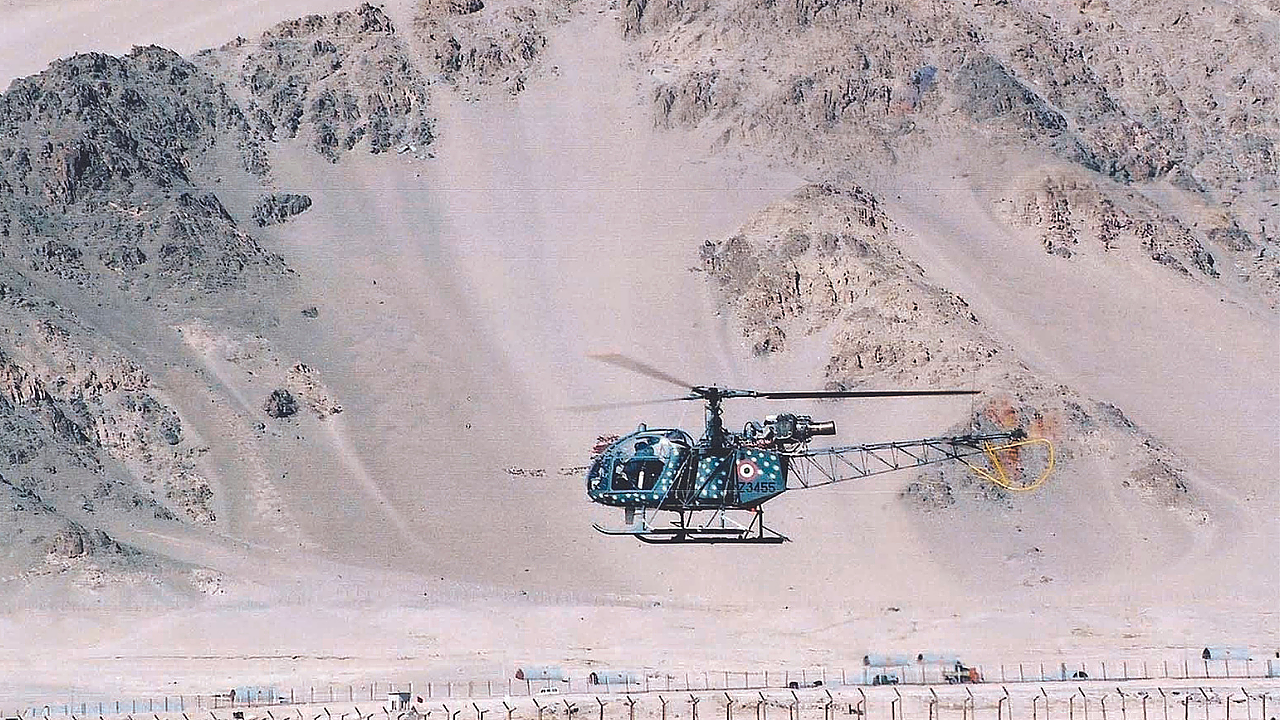
It is not often that a military aircraft remains in operation for six decades, with many more years of service still to come, but this is exactly the case with the Chetak helicopter fleet operated by the Indian armed forces.
First inducted in 1962, the Chetak was built in India under a license agreement from the erstwhile French firm Sud Aviation by state-owned airframer Hindustan Aeronautics Limited (HAL) in Bengaluru. The helicopter remains in widespread use with the Indian armed forces; in addition to operational duties, it is the basic training helicopter for pilots of all three services. These helicopters are expected to be completely phased out from service only around 2030.
Speaking on the 60th anniversary of the workhorse, Defence Minister Rajnath Singh highlighted the stellar performance of the Chetak, both during peace and in conflict, besides contributing to fostering the spirit of integration and jointsmanship. It participated in nearly every major military operation, both in peacetime and war, since its induction in 1962, including operations on the inhospitable Siachen glacier. In tribute to this iconic helicopter, the IAF made a 26 aircraft flypast at Air Force Station, Hakimpet, where anniversary celebrations were held with aircraft and helicopters, including Chetak and Dhruv helicopters Pilatus, Kiran and Hawk trainers. The finale was a diamond formation flypast by eight Chetak helicopters.
Delayed Replacement
Delays in the modernisation plans of the Indian military have meant that the Chetak and its stablemate, the Cheetah, have remained in service with the army, air force, navy and coast guard for far longer than they should have. An estimated 400 Cheetah and Chetak helicopters stay in service with the armed forces, and keeping these platforms operational, whose core technologies were developed six decades ago, remains a challenge.

HAL has successfully transitioned to developing indigenous helicopters, such as the Dhruv twin-engine helicopter, whose deliveries commenced in 2001-02. HAL has built more than 300 Dhruv helicopters since then. The replacement for the Chetak and Cheetah helicopters will be HAL’s indigenously designed and developed three-tonne class Light Utility Helicopter (LUH), which is slated to enter service before 2025.
Due to the urgency of finding a replacement for the Cheetah and Chetak helicopters and the large numbers required, it was decided to split the requirement between the indigenous LUH and the Russian Kamov Ka-226T helicopter. However, it now appears that LUH will be the only type to be ordered. The navy placed the last order for the Chetak helicopters in August 2017, when it ordered eight units. HAL has delivered these helicopters. The navy, just like the other services, uses its Chetak helicopters for a wide range of missions ranging from communication duties (passenger transport), cargo/ material transport, casualty evacuation, search & rescue, aerial survey & patrolling, emergency medical services, electronic news gathering, anti-hijacking, offshore operation and under-slung operation.
Versatile Workhorse
The first SA 316 Alouette IIIs were inducted into the Indian armed forces in 1962, meeting their requirement for a modern light helicopter. HAL was then tasked with building these helicopters under license from Sud Aviation, and the first Chetak (SA 316 Alouette III) in ‘Fly Away’ condition was delivered in 1965. The navy received its first Chetak in February 1966 and operated approximately 80 examples, of which an estimated 50 remain in service today.
A high-altitude variant known as the SA 315B Lama (Alouette II) was contracted for in September 1970, and this helicopter came to be known as the Cheetah in India. The SA 315B Lama was specifically designed for high-altitude operations and combined an Alouette II airframe with the Alouette III’s powerplant and rotor system. The Indian Army took delivery of its first Cheetah helicopter in 1976-77, and these helicopters remain the lifeline of Indian soldiers posted at high-altitudes in the Himalayas till this day.

The Chetak is a two-tonne class helicopter that can accommodate two pilots and five passengers. It is also cleared for single-pilot operation, which allows it to carry six passengers. The helicopter has a cruise speed of 185 kmph and a maximum operating altitude of 6,500 m. It has a range of 500 km, flight endurance of three hours and a maximum fuel capacity of 575 litres. Chetak and Cheetah helicopters are powered by 562 SHP Artouste - III B turboshaft engine developed by the erstwhile French firm Turbomeca (now known as Safran Helicopter Engines). The Artouste has proven to be a reliable, robust and simple to use engine, and with proper and timely maintenance, it will continue to serve reliably despite its age.
HAL went to develop two variants of the Cheetah helicopter, though the Chetak has remained mainly in service largely unaltered. HAL developed a light attack variant of the Cheetah in the nineties, called the Lancer, optimised for anti-insurgency operations, close air support, suppression of enemy fire, attack on vehicular convoys, destruction of enemy machine gun positions and anti-armour applications. The Lancer was fitted with a single jettisonable combination weapons pod on either side of the helicopter, which carried one 12.7 mm gun and three 70 mm rockets. The Cheetal helicopter is a re-engined variant fitted with a single TM333–2M2 engine used in Dhruv MkI and MkII helicopters. The Cheetal helicopter set the record of the world’s highest landing at ‘Saser Kangri’ of the Himalayas in 2006, and HAL initiated the project in 2002. The IAF has placed orders for a total of 30 Cheetal helicopters.